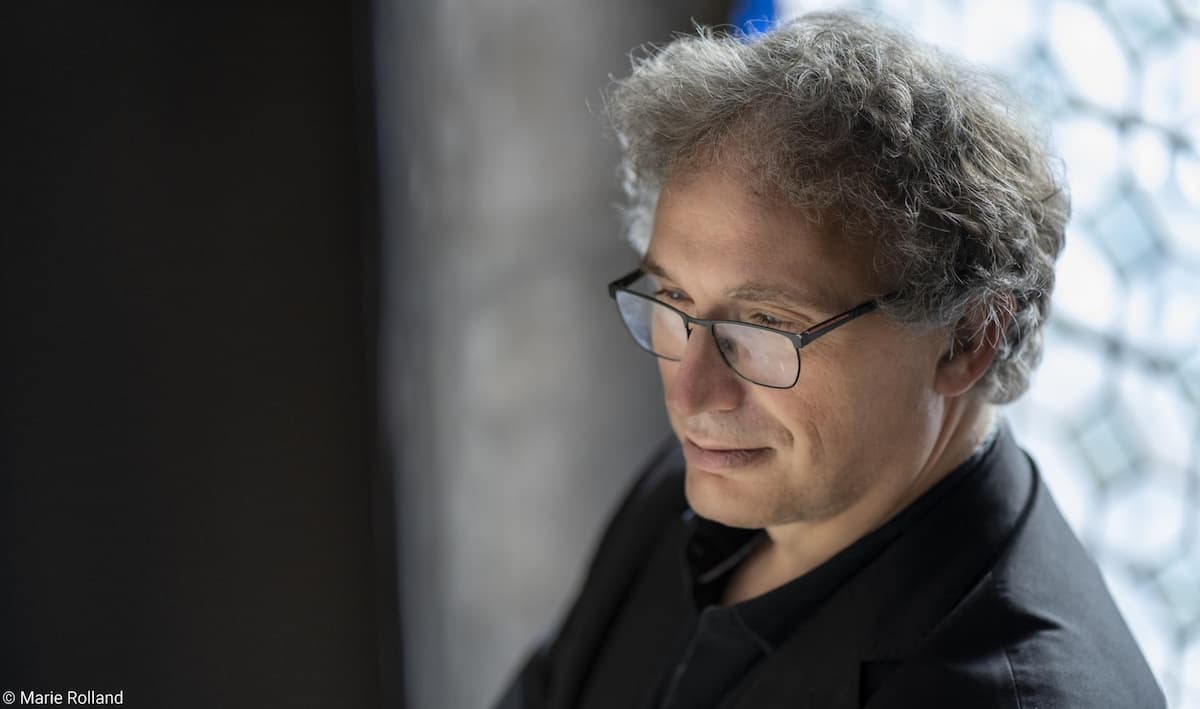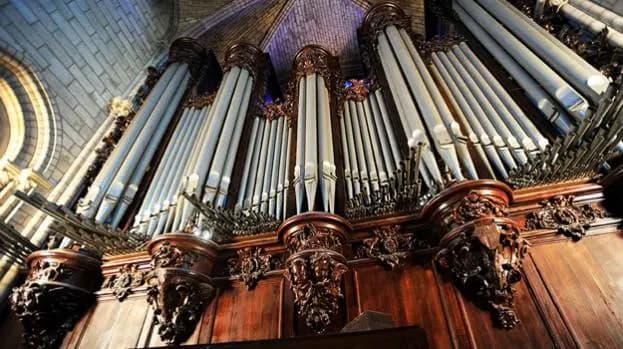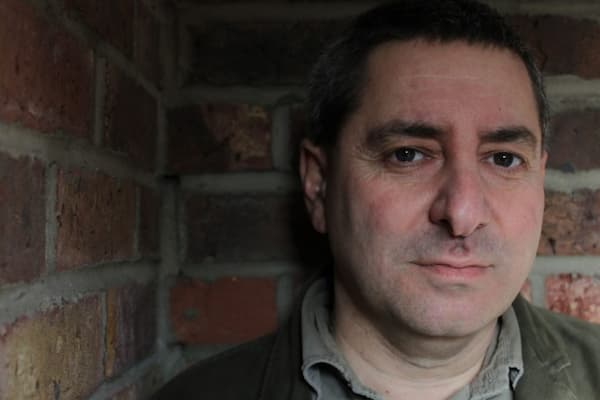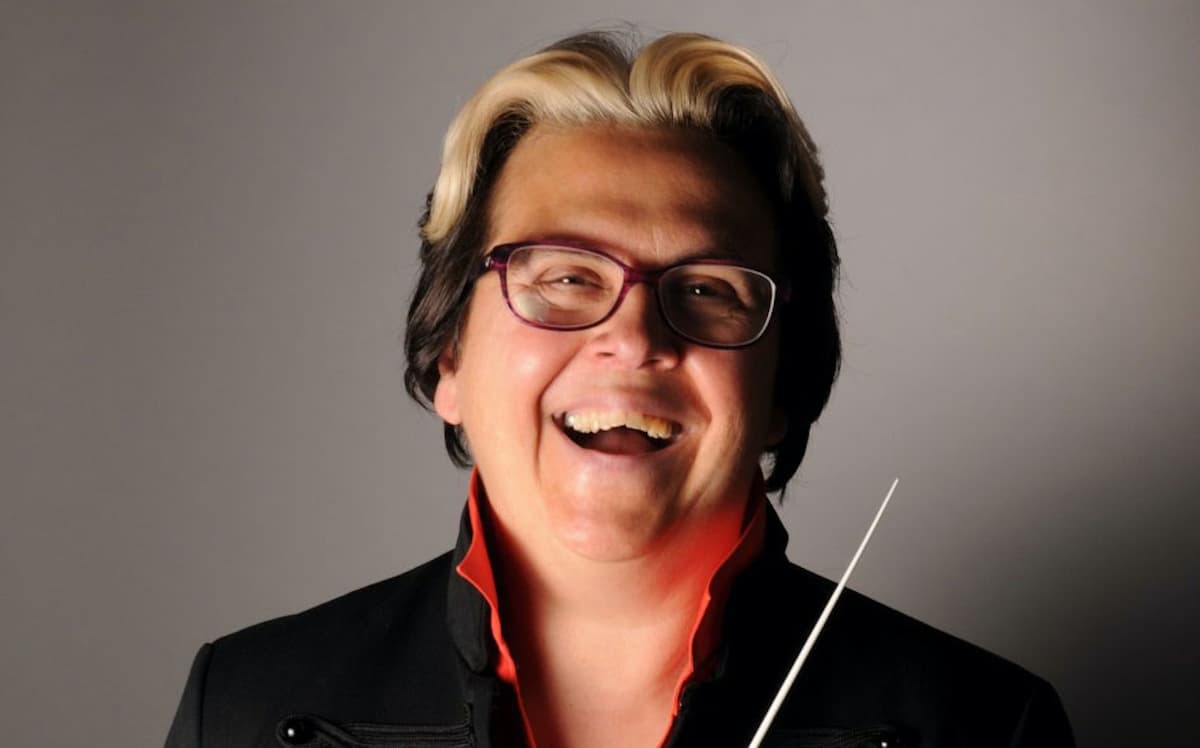French composer, organist, and improviser Thierry Escaich believes that his skill in improvisation is the most important part of his art. The art of the improviser is one that is a particular skill of the classical organist. Improvisation is used to fill gaps in a church service, fill time before services, provide an atmosphere, in short, set the situation for a ceremony.

Thierry Escaich (Photo by Marie Rolland)
It’s not a skill undertaken lightly, but one that requires knowledge of the harmony and structures of music. Escaich said that as part of his keyboard curriculum for his students, improvisation was the last element they were taught after they’d studied all the other elements of music. Putting harmony together with structure gave students the freedom to use their musical imaginations to write a piece on the fly that had integrity and value. In our conversation, Escaich constantly cited the need to understand the forms, such as passacaglia, chaconne, tarantella, and the building blocks of work, such as a counterpoint or canon, as critical to the improvisation process.
The most recent recording of Escaich’s music is by an unusual ensemble: a sextet made up of a piano trio and a percussion trio. When he wrote Vitrail for the ensemble, as a commission from the Singer-Polignac Foundation and the Deauville Festival, he sought to pair instruments across the two trios, such as cello and vibraphone. Often, the combination makes it difficult for the listener to determine exactly which instruments are playing.
The title, Vitrail, means Stained Glass, and there is a brittle, glassy edge to the work. He emphasizes the highly visual dimension by using the instruments’ high register to create a shimmering sound, the percussion can add a cloud, and the lower voice of the cello for a darker idea.

Trio Messiaen and Trio Xenakis (Photo by Yannick Coupannec)
Thierry Escaich: Vitrail
Escaich sought to create an orchestral sound from chamber music, modelling this as a reverse of the other work on the album, Shostakovich’s Symphony No. 15, arranged for a chamber ensemble.
Thierry Escaich – Vitrail / Dmitri Shostakovich – Symphony No. 15 op. 141
Escaich’s background in improvisation has been strengthened by his interest in music for silent films, which as we all know, were silent of speech but not of music. His interest in improvisation started when he first approached a keyboard at age seven, and now, 53 years later, is only getting better with age. To ‘score’ a silent film, he first watches it two or three times so he can underscore the high points of a film: love scenes or flood scenes, workers’ scenes or machine scenes, and so on. One film he’s worked with a number of times is Fritz Lang’s 1927 German expressionist film Metropolis. Escaich said that he’s found a sense of his orchestral pieces in the kernels created during his film improvisations.
As of 24 April 2024, Escaich was appointed one of the organists of the great medieval cathedral, Notre-Dame de Paris. This was following the devasting fire of 2019, which destroyed the building’s wooden roof and spire and damaged the upper walls but, fortunately, did not touch the organ or its 8,000 pipes.

The Organ Pipes at Notre-Dame before the fire
The pipes needed to be cleaned, however, from all the soot and lead dust from the fire, and so all the pipes were removed from the cathedral for this process. The reassembly of the organ started in 2023 and will be completed in 2024. Escaich said that he and the other three organists (Olivier Latry, Vincent Dubois, and Thibault Fajoles) will have access to the organ in November in preparation for the first mass in the restored Notre-Dame on 8 December 2024. The choir organ, which was too small, will be replaced and should be ready for an opening at the end of 2025. The builder of the choir organ has not yet been decided.
One influence Escaich cited was the organist Maurice Duruflé, one of the great French organ improvisers, who was the organist for Saint-Étienne-du-Mont from 1929 to 1986. Escaich succeeded him as organist at Saint-Étienne-du-Mont and is considered one of the current ambassadors of the great French school of improvisation.
Escaich writes music for solo organ, up to concertos, symphonies, and operas. One of the most striking of his vocal works was the song ‘D’une douleur muette’ (From a Silent Sorrow), written on hearing of the death of composer Olivier Greif.
Thierry Escaich: D’une douleur muette (Marie-Laure Garnier, soprano; Yan Levionnois, cello; Philippe Hattat, piano)
As he writes his works, he sees each linking to the next – in finishing one piece, he brings those ideas forward. We look forward to his next works and all that he brings to it.
For more of the best in classical music, sign up for our E-Newsletter


